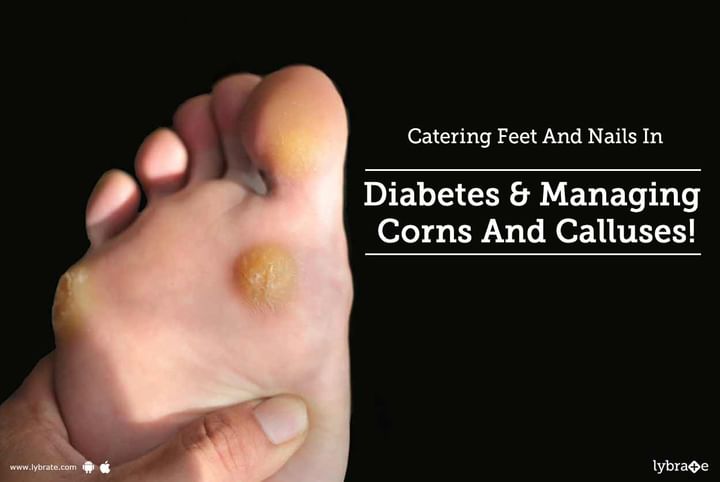Catering Feet And Nails In Diabetes & Managing Corns And Calluses!
Diabetes paves the way for numerous foot problems. They are painful can affect gait and posture. This is why taking care of the feet is essential for anybody, especially diabetic people.
Common Diabetes-Related Foot Problems-
Diabetes can cause foot deformities like hammertoes and bunions. In most cases, the condition is reversible but in some cases the deformity is permanent. Even then, surgery can help.
Common problems of the foot include corns and calluses. Not taking good care of the feet and toenails can lead to an array of bacterial and fungal infections like Athlete’s Foot or infections of the nails. Let’s look at how we can take care of corns and calluses.
What are Corns and Calluses?
They are apparently similar and often affect a person simultaneously. Calluses are dry, hardened patches of skin, especially underneath the toes. They make it difficult to walk, they can be prickly on the heels. The cracks in the feet easily allow fungal or bacterial infections.
Corns, on the other hand, are more painful. They form on softer parts of the feet. Calluses are limited to the harder parts where the pressure is higher. Unlike calluses, corns cause more pain than numbness. Corns are smaller and can appear even on top of the feet or at the sides.
Both are identified by thickened, hardened skin that is dried and cracked on the outside and painful on the inside.
Problem With Toe Nails in Diabetic People-
The toenails of diabetic people tend to get thicker and more brittle. They also tend to grow inwards if they are not clipped regularly. Ingrown nails are painful. Also, thicker brittle nails make room for infection.
Treatment-
The best idea is to avoid such problems of the foot by maintaining good hygiene. Here’s what can be done to reverse corns and calluses and fungal nail problems:
-
Washing the feet with mild soap in warm water every day to keep them clean and soft.
-
Using natural or over-the-counter antiseptics to fight the existing fungus and bacteria.
-
Using over-the-counter oral medication to fight the infections.
-
Wearing closed shoes with socks to lock in moisture and avoid contact with dirt.
-
Keeping the feet dry to avoid fungal infection but keeping them moisturized to avoid cracks that allow the infection to enter the body.
-
Wearing special diabetic footwear to ensure that the feet get the required support. As long as the feet are not sweaty and the airflow is maintained, they won’t be a breeding ground for bacteria, virus, and fungi.
-
Trimming nails every week and keeping them clean.
Treatment of corns, calluses, and ingrown nails is the same as the preventive measures so they must become a part of life. Except for the medication, that is only needed when there is already an infection.



+1.svg)
